As acronyms go, DOO was always going to be one of the more unlikely contenders to become part of our common parlance.
At least, that was until April 26 2016, when RMT union members employed by Govia Thameslink Railway led their first walkout over the operator’s plans to introduce Driver Only Operation on parts on the Southern network.
With drivers’ union ASLEF then entering the fray, and with major arterial routes into London soon brought to a complete standstill, this formerly obscure operational term was rapidly elevated from the confines of industry into the bright glare of the mainstream media spotlight.
Neither side was prepared to give ground on principle, and the prospects of an early settlement slowly ebbed away as the number of strike days and overtime bans began to stack up.
Personal catastrophe would inevitably follow. Passengers missed meetings and medical appointments, and in some cases were even sacked for poor time-keeping.
Heavy-handed handling of the strikes by management and stories of passengers unwittingly caught in the crossfire would attract more column inches than the actual cause of the dispute itself, ensuring that there would be no winners in the public relations war and that untold reputational damage would be inflicted on the railway.
Unfortunately, it would also prove to be the thin end of the wedge. At least five other operators and all three of Britain’s largest rail unions were subsequently drawn into a fight that continues to rumble on some 28 months later, and which threatens to become the defining industrial dispute of a generation.
Along the way agreements have been reached between some of the individual unions and operators concerned. But these now look like false dawns as DOO remains very much a live issue, and one that has steadily evolved far beyond the simple question of whether it should be the driver or guard who operates the doors.
RAIL has covered every twist and turn of an ugly battle that was begun by the unions on the grounds of safety, but which is now being fought on several different fronts. Opinion has been deeply divided right across the country - from Wessex to Windermere, and Liverpool to Littlehampton.
On the one hand, DOO opponents warn of the risk of mass job losses via the backdoor, should train guards no longer be required to operate doors. Despite assurances from operators that displaced guards would be offered uninterrupted employment and protection of their wages (and that trains would continue to run with a second person in all but exceptional circumstances), many rail users have understandably been left anxious by the threats to their personal safety and accessibility that we are told could follow if trains are allowed to run without the absolute guarantee of a guard.
At the other end of the spectrum, DOO supporters have criticised unions for their ‘Luddite’ opposition to the continued modernisation of the industry and efforts to tackle spiralling costs. They argue that switching to DOO will reduce journey times and improve service punctuality, as well as delivering improvements to customer service - guards released from the distraction of opening and closing doors could concentrate more on catering for passengers in their new role as On-Board Supervisors (OBS).
Whether there is a second person or not, operators insist that the safety case has already been proven beyond doubt over the past three decades, with approximately a third of all UK rail services already operated in this way with full union agreement.
They are able to point to London Underground, in particular, where doors are operated by drivers and which safely handles four million passengers per day.
With new fleets and improved technology arriving every year, the network is perhaps better equipped for more widespread DOO than ever before.
Data analysis from the Office of Rail and Road (ORR) and RSSB (Rail Safety and Standards Board) has been seized upon by operators and government to lend additional weight to their joint condemnation of the strike action. But it has also given unions cause to question the neutrality of the rail regulator and the standards body.
Away from the industrial and media storm, an intriguing political subtext has also emerged. Some argue that dark forces are at work to permanently deprive unions of their future bargaining power - after all, if a guard is no longer responsible for the safety-critical role of operating the doors, then those trains will no longer have to be cancelled if staff are made unavailable through strike action or otherwise.
Alternatively, some believe the DOO dispute is part of a wider campaign by unions to destabilise the entire franchising system, by crippling operators and then - amid the wreckage - capitalising on existing public anger at a widely discredited fare structure.
Union accusations of rampant profiteering by train operating companies, combined with the former’s long-standing opposition to the privatisation of Britain’s railways, would appear to lend credence to that strand of argument. Or might this just form part of a smear campaign by an unsympathetic and Conservative-supporting media to whip up frenzied talk of a left-wing coup against a democratically elected government, as union leaders would have you believe?
In this three-part series, RAIL attempts to make sense of the many issues at play so that readers can draw their own conclusions. We examine the conditions that led to the first strikes in April 2016, and speak to protagonists on both sides of the dispute in order to paint an accurate and balanced picture for those perhaps too strike-weary to remember.
Finally, we look forward by asking the crucial question of whether any resolution can be found.
Firstly, it is useful to define the meaning of DOO, which is often used interchangeably with other terms that describe various methods of operation for doors and train movement.
N DOO - Driver Only Operation: The driver is in complete control of train movement and door control. Some trains are DOO-compatible, which means it is equipped for DOO but has not yet been activated, and doors are still controlled by a second person. Approximately a third of UK rail services are operated using DOO - including London Overground (as a precursor to Automatic Train operation) and Thameslink, and the majority of light rail networks.
N DCO - Driver Controlled Operation: A new term that did not exist before 2015. Train movement and door operation is controlled by the driver, while a second person is onboard to provide customer service. The train can still run in DOO should a second person not be available, rather than being cancelled.
N ATO - Automatic Train Operation: The train is driven automatically by an ATO system within the control of a digital signalling system such as European Train Control System (ETCS). A driver is normally still present, and will close doors before pressing a ‘start’ button to reactivate ATO between stations. It is commonplace on metros including the London Underground, and has more recently been introduced on the Thameslink core section through central London.
N DTO - Driverless Train Operation: The train has no driver, but does have an on-board member of staff to cater for passengers and activate door closure that in turn commands ATO to take over until the next stop. The staff member is able to move the train at a slow speed to a place of safety, in the event of equipment failure. It has existed on the Docklands Light Railway since its opening in 1987.
N UTO - Unattended train operation: The train has no on-board staff, and train movement and door operation is entirely automatic. Examples include airport shuttle transits that move passengers between terminals.
Running trains without guards (also known as conductors) only became possible when the right technology came together in the mid-20th century. Prior to that, regulations deemed the presence of a second safety-critical person essential - in order to apply emergency brakes from the brake van in the event of a ‘runaway’, and to provide train protection (by placing detonators on the track and/or contacting signallers from the lineside) in the event of a derailment or accident.
Ticket inspections took place where possible, although revenue collection was still largely the preserve of ticket offices that once existed at most stations until the Beeching cuts and rationalisation of the 1960s. Door control rested with passengers in an age of slam-door coach stock and pre-central locking.
In the UK, London Underground made the first move to dispense with guards by taking advantage of the opening of its new ‘high-tech’ Victoria Line in 1968-69, and new stock which featured power-operated doors, public address systems throughout the train, driver vigilance devices for sudden illness, and emergency communication systems for passengers to speak to the driver and for drivers to speak to signallers without leaving the train.
Initially this method was known as One Man Operation (OMO), because despite sitting in the driving cab train operatives were only responsible for opening and closing doors. They were not actually driving the train, which was controlled automatically using a new ATO system.
The Victoria Line was custom-built to suit OMO via the provision of straight platforms, black and white platform monitors (which would eventually move inside the cab), and platform staff to assist the driver with deciding when it was safe to close the doors.
Staff and union opposition was limited - compulsory redundancies could be easily avoided by transferring staff to other lines or nearby depots, and by providing a new direct line of promotion for guards to more interesting and better-paid driving, station, signalling and control jobs.
A progressive rollout followed on other Underground routes as modern trains were introduced. And even existing fleets such as the Metropolitan Line’s A-Stock and 1972 Stock on the Bakerloo were converted, so that by 2000 OMO covered the entire LU network.
In the years that followed, it was our European neighbours who stole a march on what had become known as DOO (regardless of whether trains were manually or automatically operated). In the 1970s SNCF introduced DOO on its suburban trains in Paris, followed by Deutsche Bahn on its S-Bahn network in Berlin.
Given the large capital investment required to replace ageing slam-door stock, it would take British Rail 14 years to follow LU’s example. It eventually managed to get in on the act in 1982, when it took delivery of Class 317s for its BedPan (Bedford-St Pancras) electrification scheme.
Former ScotRail, Network SouthEast and InterCity Managing Director Chris Green recalls that switching to DOO formed an integral part in persuading the government that investment in new stock was justified at a time of falling revenues, a record low in patronage, and economic recession.
He tells RAIL: “With the wider economic situation, 1982 was one of the lowest points in railway fortunes. Government saw little future in rail, investment was minimal, and cost reduction was the name of the game.
“The only way that modern replacement trains could be justified was by proving that the annual operating costs would be hugely less than the old trains, which could be done through technology - such as lighter weight units - and by halving train manning with DOO. NSE later calculated that DOO reduced running costs by 30%, which helped us to get the huge £600 million Networker Class 465 investment authorised for South East suburban routes in 1988.”
BR made no secret of the fact that moving to DOO was primarily motivated by the financial savings it was under pressure to make. The infamous Serpell Report into railway finances had also been published in 1982 to consider ways of cutting BR’s widening operating deficit, including a controversial (but thankfully discarded) option to cut the network by up to 84%.
Green says a second motivating factor for DOO was that recruiting sufficient numbers of guards was becoming more difficult in the South East. Better-paid jobs with better working conditions and more sociable hours could easily be found at places such as Gatwick Airport, at a time when air travel was rapidly expanding.
This meant that almost 10% of trains were being cancelled for having ‘no guard’, causing further financial and reputational damage to the railway.
BR therefore adopted a similar system for its BedPan scheme as had been demonstrated by LU and in Paris and Berlin. Drivers were given the means to control doors and communicate with passengers and signallers from the cab, and passenger alarms and radios were installed in the event of driver incapacitation.
Platform monitors and mirrors were installed to assist drivers, while station staff were also on hand to help with dispatch at manned stations or those with curved platforms, by giving the driver the ‘right away’.
Simply ‘looking back’ from the cab window was (at least initially) also deemed acceptable for drivers of short trains on straight platforms. Power doors were designed to reopen if they closed on small objects such as handbags, in order to reduce trap-and-drag incidents. And a blue light in the cab would illuminate when doors were locked, to inform the driver that is was safe to depart.
Unfortunately, where industrial action had been successfully avoided by LU, BR was not so lucky - the arrival of the ‘317s’ was to trigger a year-long dispute over safety and job protection.
The new trains were ‘blacked’ by union members who refused to operate them, and so sat in sidings for a year from their delivery in March 1982, until the dispute was resolved.
ASLEF and the National Union of Railwaymen (predecessor of the RMT) both pressed for special driver-only productivity payments which would eventually be awarded in time for a limited service to start in April 1983 followed by a full service that October - 17 months later than intended. The deal also meant that guards would be retained to carry out on-board revenue duties (until natural wastage took its course), and that there would be no pay cuts or compulsory redundancies.
Former Chiltern Railways chairman Adrian Shooter became BR’s Area Manager for BedPan barely a year after agreement had been struck, in September 1984.
“I remember getting a lot of letters from passengers about how unsafe it all was, so I set about determining how safe it was for myself,” he recalls.
“Within a few days I took Malcolm Southgate out with me, who’d never been on a DOO train either. We went in the cabs and every driver we spoke to - unprompted - said how good it was.
“The situation had been pretty dire, and the old trains were far worse than anything that runs on the network now. The old Class 127s were non-corridor, so guards could not check tickets and would sit reading their newspapers. For drivers, they were very proud of their new trains and in control of keeping the train on time, so punctuality became very good.”
The disputes didn’t end there, however, at a time when battles between the union movement and Margaret Thatcher’s government were to reach a high during the 1984-85 miners’ strike.
A bitter (although poorly co-ordinated) national strike had been conducted by ASLEF and NUR over flexible rostering in 1982, while an adversarial environment continued over plans to introduce DOO working on Great Northern and Glasgow suburban passenger services.
NUR had insisted that BedPan was just a trial, and members had voted at the union’s 1983 and 1984 conferences to resist any further extension of DOO. Plans to also introduce DOO on freight services, combined with the dismissal of 257 striking guards in Glasgow, caused NUR leader Jimmy Knapp to call a national ballot for strike action in August 1985.
Current RMT General Secretary Mick Cash says: “It was a long-running dispute that started with BedPan, Strathclyde and the removal of guards from freight trains, and which ended up with the union balloting in 1985. The union opposed the principle on safety and because BR had 11,500 guards whose jobs were being attacked. It was all a cost-cutting exercise, and guards were needed for the safe dispatch of trains then and still are now.”
RMT records show that 4,360 members voted for strike action and 4,815 against, which Cash claims had more to do with intimidation metered out by BR managers rather than any failure of NUR members to stand by their principles.
He adds: “It was close, but we had people being sacked and bullying tactics from BR that hadn’t been seen before. We’re now seeing the same from Southern and other operators to undermine industrial action currently being taken against them.”
The loss of the ballot gave BR confidence in its assumption that the 1983 DOO Agreement could subsequently be used as the basis for the steady evolution of DOO on other parts of the network, as greater numbers of modern trains became available.
Network SouthEast inherited the agreement when the brand was launched to replace BR’s London & South Eastern sector in 1986, and under the leadership of Chris Green it became NSE policy to spread DOO on all routes as new inner-suburban sliding door fleets arrived.
Significant preparations were made, including platform lengthening, improved lighting and better-quality mirrors and monitors to help drivers spot entrapments and to close doors safely.
Green explains: “The 1983 DOO Manning Agreement and ‘no live redundancy’ undertaking we gave handed us a honeymoon period in which we could justify ordering large fleets of new trains. The honeymoon also had the full support of unions who wanted NSE to succeed in its mission to modernise the railway.”
This policy met with mixed success, however. DOO was accepted by unions on inner services on NSE’s Anglia and Great Northern route, and quickly reached Peterborough, Cambridge and Southend on converted Class 315s, and then ‘317s’ and ‘321s’.
The original Class 317 agreement for BedPan was transferred for the launch of Thameslink in 1988 to cover Class 319 services from Bedford-Brighton, the Sutton Loop and Sevenoaks.
Networker Class 465s and ‘455/6s’ replaced the slam-door fleet with DOO on South Central and South Eastern routes from 1992, while Class 165 and ‘166’ Turbo fleets were introduced as DOO on Thames & Chiltern from 1990.
Former Thames & Chiltern Divisional Director Dick Fearn remembers: “We managed to get DOO through without much difficulty by meeting all the conditions of the 1983 Agreement. Guards accepted it because many of those over 50 were offered generous voluntary redundancy packages, while other guards wanted to train as drivers which were better paid and worked in the relative comfort of the cab, and would benefit from the negotiated DOO supplement.”
Fearn would later adopt similar tactics to introduce DOO in Ireland, during his ten-year tenure as COO and then CEO of state-owned Irish Railways.
On NSE’s Euston-Northampton route the Watford DC service was converted to DOO with Class 313s, before stiffer resistance was encountered on services from Euston-Northampton.
According to Green, NSE had planned for DOO with a new Class 321 fleet, but it was rejected by the RMT’s LM Sectional Council despite Anglia drivers already working the same trains.
Unions also refused to accept DOO on the South Western route, where platform monitors were installed but eventually removed, even though the same Class 455 stock was already being operated in DOO mode on the neighbouring South Central route.
Cash says these union objections were once again made on the grounds on safety, and are evidence that the principle of DOO had been conceded only reluctantly and specifically for BedPan in 1983.
“We’ve been consistent throughout the piece ever since 1983. That ballot meant they could do it on a couple of routes and services, but every time they’ve tried to implement it they’ve faced a fight from us. We haven’t ever changed our tune because more and more people have been using the railway and we’ve needed more staff, not less.”
Following the break-up of BR and privatisation, franchising has followed the same NSE policy on introducing DOO as new fleets arrived. This includes c2c on Fenchurch Street-Shoeburyness with converted Class 357s in 2015, London Overground with ‘378s’ (from July 2007), and the entire Southern and Southeastern outer networks with Class 375/7 Electrostars (XXXX).
Some 30% of the main line network is now covered by DOO. Technology has also advanced with some trains now featuring train-mounted cameras in addition to their platform-mounted counterparts, which raises the possibility of extending DOO to other areas without the need to install expensive platform equipment.
N In Part 2, we examine how in 2016 union unrest was translated into the first large-scale strikes in the name of DOO for more than 30 years.

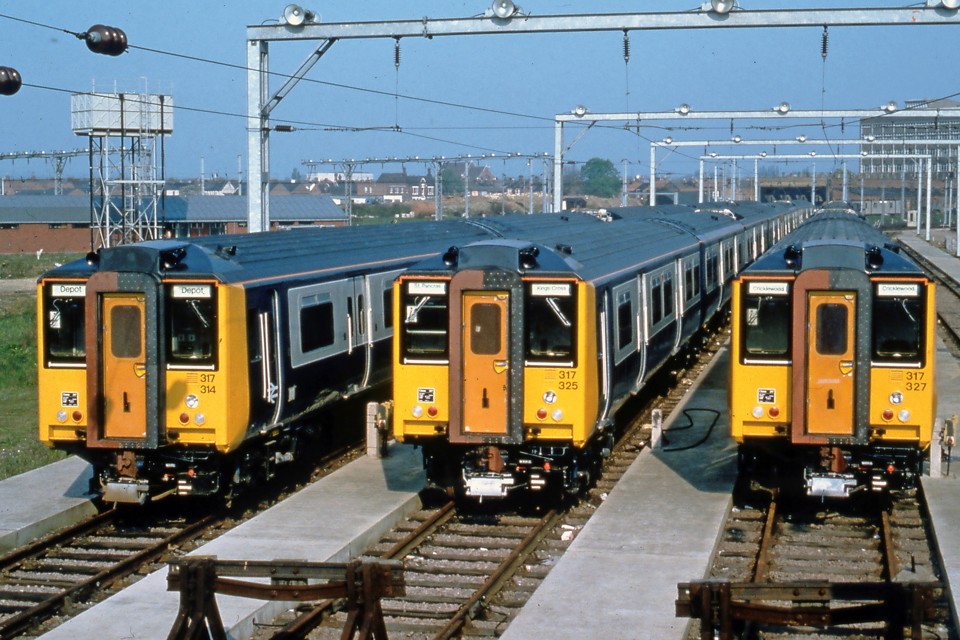
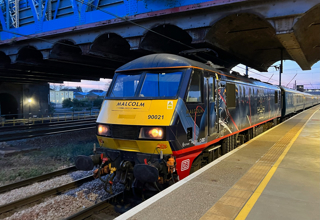
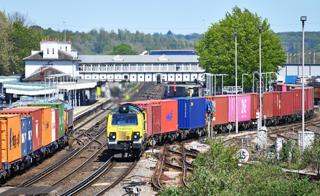
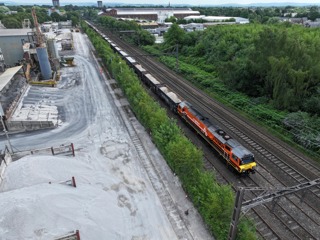
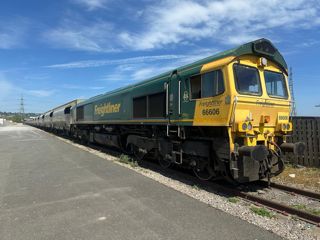
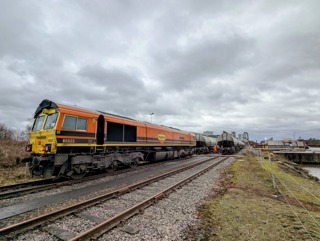










Login to comment
Comments
No comments have been made yet.